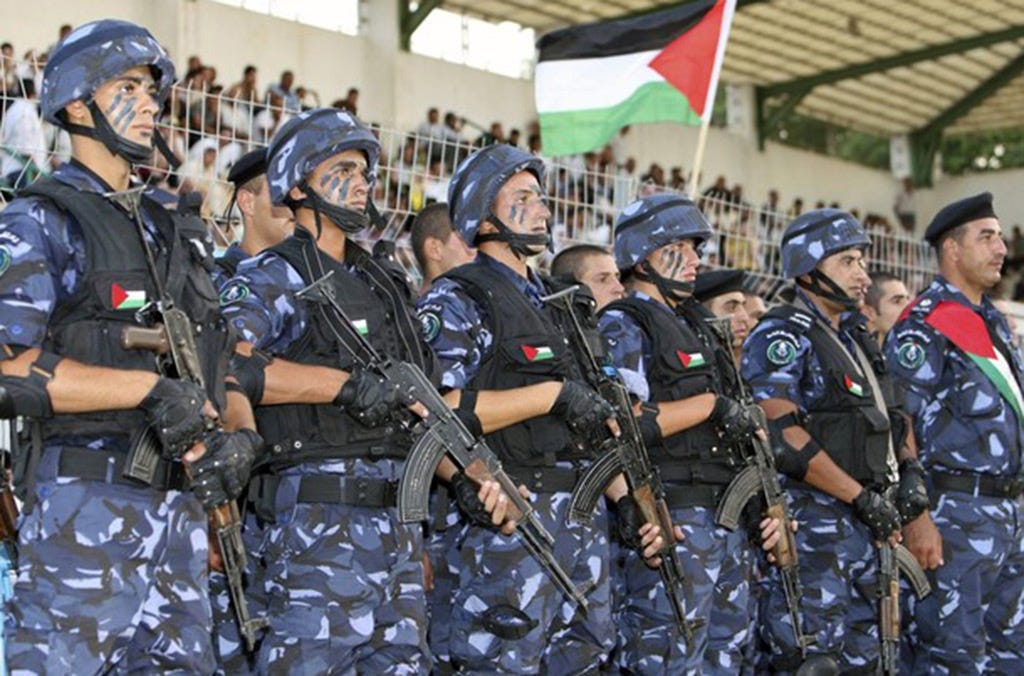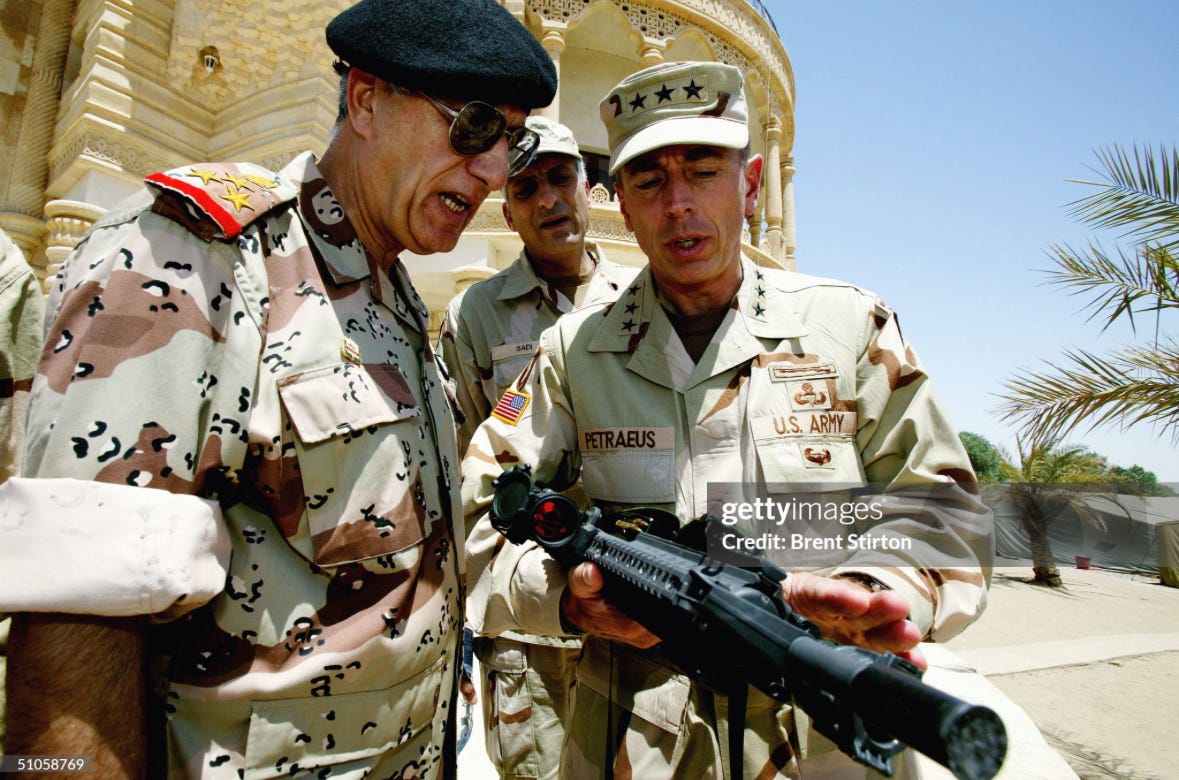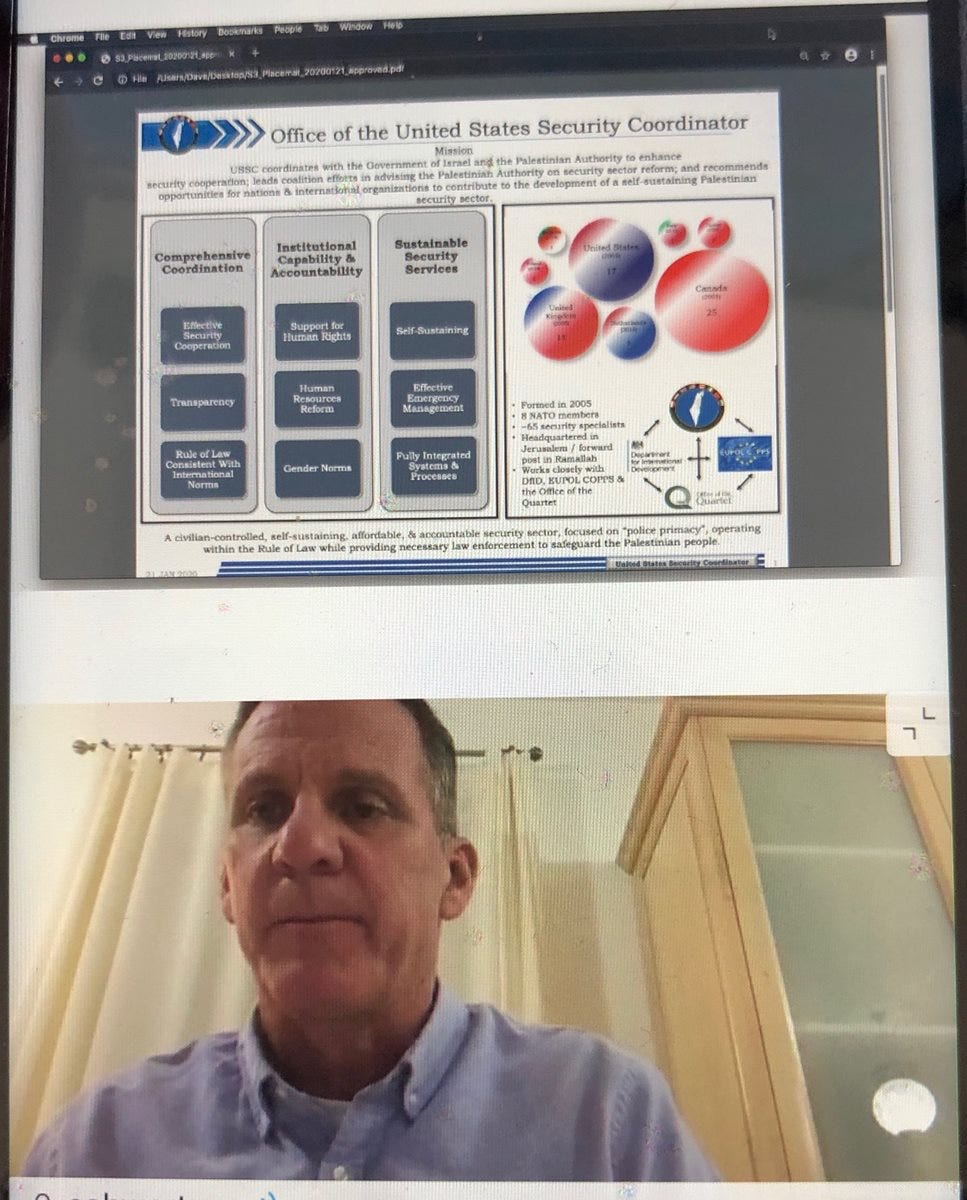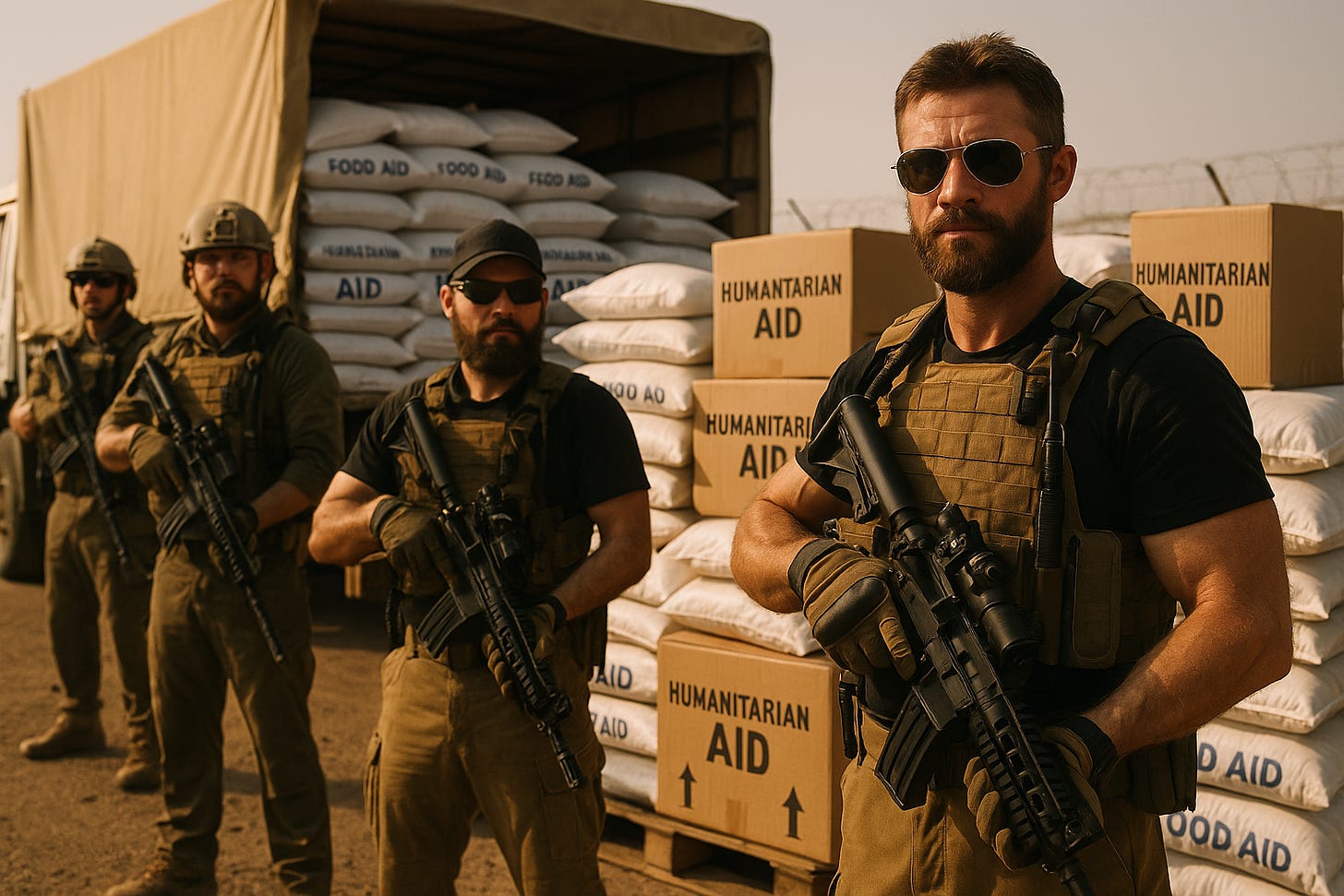Operation PROTEUS:
How Canada and the U.S. Built a Proxy Security Regime in Palestine—
Canada’s involvement in Palestine is neither neutral nor limited to diplomacy. It functions as part of a Western security system designed to stabilize Israel’s occupation by outsourcing repression to Palestinian intermediaries. The instrument of that policy is Operation PROTEUS, a long-running mission that arms, trains, and directs the Palestinian Authority (PA) Security Forces in the West Bank under foreign command.
These forces do not exist to protect Palestinians. Their mandate is to carry out arrests, suppress dissent, and police civilians—demonstrating loyalty not to their people, but to Western backers and the Israeli state.
The program is administered through the Office of the United States Security Coordinator (USSC), which includes Canadian, British, and Dutch personnel but is led by American generals. Its strategic doctrine was imported directly from U.S. counterinsurgency operations in Iraq and Afghanistan, where local militias were rebranded as national forces under foreign supervision. In Palestine, this was called “state-building.” In function, it is occupation-by-consent.
Lieutenant General Mark C. Schwartz, who ran the USSC from 2019 to 2021, oversaw this structure. A former commander of elite U.S. Special Forces and strategic advisor to NATO, Schwartz now advises the Gaza Humanitarian Foundation (GHF)—a post-genocide entity claiming its creation to manage Gaza’s humanitarian crisis.His role in both arenas shows the system’s continuity. Same doctrine, same function, same personnel.
The Counterinsurgency Template Behind PROTEUS
The logic behind PROTEUS didn’t originate in Palestine. It was written into U.S. military field manuals and tested in Iraq. The model emphasized reduced foreign footprint and increased local compliance, achieved by training proxy forces that act as internal police. These programs provided everything: salaries, uniforms, operational doctrine, and oversight chains—while embedding the forces in a foreign-controlled structure.
This was codified in the 2006 Army/Marine Corps Field Manual (FM 3-24), co-authored by General David Petraeus. He didn’t just command counterinsurgency forces; he helped design the blueprint. The method: use local forces to suppress local resistance, under the guise of institutional reform.
PROTEUS follows that formula exactly. Every PA officer is vetted. Every mission is pre-cleared. Even uniforms require Israeli approval. The PA is allowed to detain Palestinians—but forbidden from protecting them against settlers or the IDF. Israeli civilians can burn homes, raid towns, and attack residents with impunity. The PA’s jurisdiction ends where Israeli aggression begins.
The name “PROTEUS” remains officially unexplained in Canadian literature. But its resemblance to “Petraeus”—whose doctrine the program implements line for line—is notable. Intentional or not, PROTEUS is Petraeus-era logic applied to Palestine: control without boots, suppression without ownership, occupation without visibility.
Canada’s Role: Funding, Training, Suppressing
Since 2005, Canada has deployed Royal Canadian Mounted Police (RCMP) officers and Canadian Armed Forces (CAF) personnel to assist in training and operational support for the PA’s security forces. Operating under USSC command, Canada contributes over $15 million annually to the program, in addition to aid routed through broader frameworks.
While marketed publicly as “law and order assistance,” internal documents tell a different story. In 2012, Canadian International Development Agency (CIDA) President Margaret Biggs described PROTEUS funding as essential to “relative stability” and confirmed that Israel had directly lobbied Canada to continue the program to avoid “popular protests on the Palestinian street.”
By 2010, Canada’s deputy foreign minister admitted that the bulk of its $300 million aid package to the PA was going straight into security sector support. No conditions were tied to elections, civil rights, or political reform. What mattered was suppressing resistance and keeping Mahmoud Abbas in uncontested control.
Repression as Governance: The PA’s Role
Since Arafat’s death, the Palestinian Authority has functioned as a subcontracted enforcer. It receives foreign aid in exchange for not challenging Israeli power. Every officer is cleared by Shin Bet. Every mission is coordinated with the IDF. The goal is not public safety, but “stability”—meaning internal pacification.
During Israel’s 2023–25 war on Gaza, which displaced or killed over half the population, the PA played no defensive role. Instead, it arrested protesters, raided homes, and jailed critics of the massacre. In Jenin, PA officers killed a child and a commander during raids meant to dismantle resistance factions.
This is the arrangement: Israel expands. The West pretends peace is on the table. And the PA suppresses its own people to preserve the illusion of progress.
From the West Bank to Gaza: The Next Stage
Lt.General Mark Schwartz was/is the central node in this system during his USSC tenure. He coordinated U.S., Israeli, and donor-state efforts to supervise the PA’s security forces. His background in JSOC, Special Forces, and NATO operations made him a textbook choice for the role. His next job confirms the trajectory.
Today, Schwartz is an advisor to the Gaza Humanitarian Foundation (GHF)—a U.S.-aligned relief group formed to manage post-war Gaza. On paper, its goals are reconstruction and governance. In practice, it mirrors USSC functions: managing occupation optics, filtering aid through foreign channels, and ensuring that no indigenous resistance can organize or rearm under the new regime.
The blueprint hasn’t changed. Gaza is being handed the same package Palestine was sold two decades ago: aid in exchange for compliance, security under foreign command, and government-as-enforcement.
Covering for Occupation: Media and NGO Silence
Despite its significance, Operation PROTEUS has faced almost no scrutiny in Canadian media. A single Globe and Mail article in 2024 referenced the mission but ignored its suppressive record. Post-media covered the Biggs memo in 2012 and never followed up.
Independent journalist Yves Engler has exposed PROTEUS repeatedly, including in late 2024. His reporting was ignored by legacy media. NGOs have also steered clear. Amnesty International, Human Rights Watch, and other watchdogs have never launched a focused investigation into PROTEUS—despite its known role in arrests, raids, and surveillance.
This silence is not passive. It protects the mission by framing it as peacekeeping. Canadian MPs are never questioned on PROTEUS in Parliament. Oversight is left to military liaisons and embassy staff. The foreign policy community pretends the mission doesn’t exist.
A Three-Star Mission
In 2022, 32 U.S. senators lobbied to keep the USSC post as a three-star general command, arguing that any downgrade would “weaken U.S. credibility.” They tried to make it sound like they were about peace, but they weren’t. They were protecting command structures. A colonel cannot interface with Israeli generals or dictate policy to the PA. Only a general can.
Canada’s former PROTEUS commanders echoed these views. The general’s rank signals authority over local governance, armed forces, and strategic direction—under the veil of diplomacy.
Gaza’s Future, Already Written
Operation PROTEUS isn’t just some quiet operation everyone forgot about, it’s the template. It shows how occupation can be outsourced, disguised, and maintained with donor funding and NGO validation. It delivers no statehood. No protection. Just suppression and managed decay.
With Mark Schwartz likely bridging PROTEUS and the Gaza Humanitarian Foundation, the transfer seems unmistakable. The same contractors, the same doctrine, the same result: repression managed through foreign-built security proxies.
First, they orchestrate a humanitarian collapse. Then they present the Palestinian Authority, NATO stability policing, or multi-nation units as the stabilizing force—despite the fact that its officers were trained, vetted, and financed by the very architects of the collapse.
Western factions do not arrive to keep peace—they arrive after manufacturing the conditions that make peace impossible. They dismantle infrastructure, block access to essentials, and fracture communities through isolation and fear. Then they offer aid structured to coerce compliance, rewarding those who suppress their own and punishing any form of resistance. It’s not peacekeeping—it’s engineered betrayal disguised as relief.








